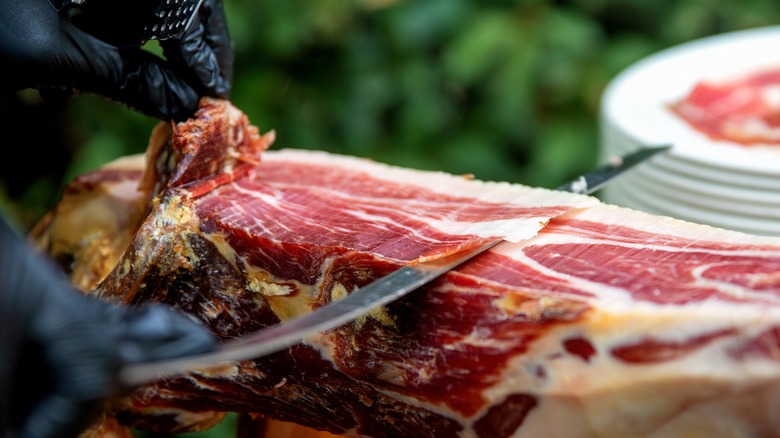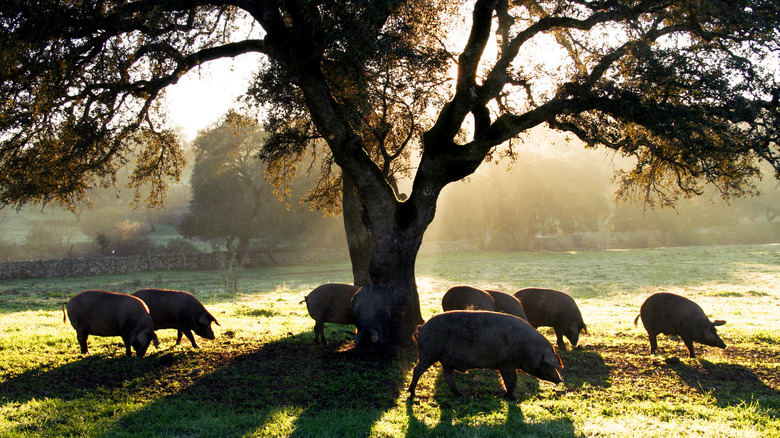Why Spain's Coveted Jamón Ibérico Could Disappear Forever
Spanish jamón ibérico is pure luxury. The melt-in-your-mouth ham is the end result of a long process, one steeped in tradition, according to Jamon.com. The black Iberico pig has inhabited Spain for centuries, as evidenced by the cave art in which the ancient pigs are depicted.
The very best of Iberico hams — and coincidentally the ones that fetch the highest prices — are the long-cured jamón ibérico de bellota, made from pigs fed on acorns, or bellota. These pigs are raised to be about 10 months old before they're released to roam free in the Dehesa oak forests, feeding almost exclusively on acorns, lots of acorns.
The outlet points out that the pigs, which weigh about 200 pounds when they're released to forage, eat up to 22 pounds of acorns a day, doubling their body weight before they're slaughtered. The hams from these acorn-fed pigs are cured for two to five years before they're sold for mind-boggling prices.
Discount chain Costco recently released a relative bargain, a three-year-old Iberico de Bellota ham, complete with a stand and knife for serving, that could be yours for the low, low price of $550. However, that deal may not last for long.
Another victim of climate change
Climate change — in the form of rising temperatures, coupled with low rainfall — now threatens the food supply of the pigs that are raised for jamón ibérico, according to The Guardian. 2022 was the hottest summer ever recorded in Spain, and it was also exceptionally dry.
Jamón producer Francisco Espárrago said the holm oak trees that make up the Dehesa forests are native to damp, humid climates, and they're not faring well under current weather conditions, producing fewer acorns, which imperils the jamón ibérico trade.
Research published in Dendrochronologia cites a number of sources that indicate the Dehesa forests are "among the most threatened ecosystems" due to the effects of climate change and have begun demonstrating "worrisome signs of decline and mortality in different regions across Spain." The decline in acorn production is likely to place jamón ibérico on the list of foods affected by climate change, where it joins chocolate, wine, coffee, and shellfish, among others.
The predicament facing jamón producers like Francisco Espárrago does more than jeopardize our ability to access luxury foods, though. The decline of the Dehesa forests also threatens the local economies of the relatively poor regions where jamón ibérico is produced, as well as threatening local farmers' ability to graze cattle. Though Espárrago is looking for solutions to the disastrous effects of climate change, the prospect doesn't look terribly bright.

